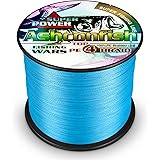Imagine a scenario where the nearest pharmacy is miles away, or perhaps entirely inaccessible. A sudden toothache flares up, a canker sore becomes unbearable, or you accidentally bite your cheek, and the pain is relentless. In such moments, the ability to turn to nature for effective relief becomes not just a skill, but a necessity. The video above introduces a fascinating aspect of survival medicine: using the common cattail to create a natural anesthetic gel.
This remarkable plant, often overlooked by the casual observer, holds a secret weapon for pain relief. As Animal Man demonstrates, a clear, sticky jelly can be found between the outer leaves of the cattail, offering a numbing effect similar to commercial products like Ambisol. Understanding how to identify, harvest, and utilize this natural resource can significantly enhance your emergency preparedness and self-sufficiency skills.
Beyond the Pharmacy: Nature’s Own Survival Medicine for Pain Relief
The concept of survival medicine extends far beyond traditional first-aid kits and store-bought remedies. It encompasses the knowledge and practical skills to leverage natural resources for health and well-being, especially during times when conventional medical supplies are unavailable. Cattails, in particular, stand out as an incredibly versatile plant in the realm of wild edibles and medicinal plants. Their ability to provide immediate pain relief from oral discomforts makes them an invaluable asset for anyone interested in emergency preparedness or living off-grid.
While modern medicine offers undeniable advantages, relying solely on it can be a significant vulnerability in grid-down or SHTF (shit hits the fan) situations. Cultivating an understanding of natural alternatives like cattail anesthetic gel empowers you to manage minor ailments without external dependencies. This shift in perspective fosters greater self-reliance and resilience, crucial traits for navigating uncertain futures.
Understanding the Cattail’s Numbing Power: Your Natural Anesthetic Gel
The secret to the cattail’s pain-relieving properties lies in the mucilaginous gel found at its base. This clear, jelly-like substance, extracted by separating the outer leaves, has a distinct cooling and numbing effect upon contact. While the exact biochemical compounds responsible for this anesthetic action are not widely documented in mainstream scientific literature, centuries of traditional and anecdotal evidence from indigenous cultures and survivalists highlight its efficacy.
Think of it as nature’s equivalent to the topical anesthetics you might find in a commercial pharmacy. Imagine if you are deep in the wilderness and develop a throbbing toothache; this simple gel could provide temporary relief until further solutions are found. The texture is akin to a thick jelly, and its immediate cooling sensation quickly gives way to localized numbness, effectively dulling the pain. This makes the cattail a true hero in the world of wilderness first aid.
The “Walmart of the Swamp”: More Than Just Survival Medicine
Animal Man accurately dubs the cattail the “Walmart of the Swamp,” and for good reason. This plant is an absolute powerhouse of survival resources, offering much more than just its numbing gel. Every part of the cattail, from root to tip, serves a purpose, solidifying its status as one of the most important edible wild plants for foragers and survivalists alike. Understanding its full potential only underscores the value of mastering its identification and uses.
- Roots (Rhizomes): These can be harvested year-round, dried, and ground into a flour rich in starch. They can also be eaten boiled or roasted, providing essential carbohydrates.
- Shoots: The young shoots, often called “cossacks asparagus,” are tender and delicious when peeled and eaten raw or cooked, similar to asparagus.
- Flower Heads: The green flower heads can be boiled and eaten like corn on the cob. Once mature and yellow with pollen, the pollen itself can be collected and used as a high-protein flour extender.
- Stalks and Leaves: Mature leaves can be used for weaving mats, baskets, and even shelter materials. The stalks offer buoyancy and can be used for floats or insulation.
- Fluff (Down): The mature brown seed heads produce a fluffy down that is excellent tinder for starting fires, insulation for clothing or bedding, and even a natural wound dressing due to its absorbent properties.
This incredible versatility makes the cattail a cornerstone for anyone building a comprehensive emergency preparedness strategy. Beyond its specific medicinal application, it truly offers departments for food, shelter, clothing, and even fire-starting, embodying the ultimate multi-purpose survival plant.
Harvesting Your Cattail Anesthetic Gel Safely and Responsibly
Acquiring this natural anesthetic gel is relatively straightforward, but responsible and safe harvesting practices are paramount. The video emphasizes a critical safety precaution: always collect the gel from the part of the cattail plant that grows above water. While the roots and lower stalks might be submerged, the risk of contamination from waterborne pathogens (like Giardia or other cysts) increases significantly.
To harvest, gently separate the outer leaves at the base of the plant. You will notice a clear, viscous jelly glistening between these layers. Use your thumb or a clean stick to scrape off a sufficient amount. Always ensure your hands or any tools used are clean, especially since this gel is intended for application on open sores or inside the mouth. Harvesting responsibly also means not over-harvesting from a single stand, allowing the plant population to thrive for future use. Moreover, identifying cattails correctly is crucial, as misidentification could lead to ingesting or applying harmful substances.
Applying Cattail Gel: Practical Uses for Grid-Down Scenarios
Once harvested, the cattail anesthetic gel can be applied directly to the affected area for immediate relief. Its primary application, as demonstrated, is for oral pain. Imagine if you are suffering from a painful canker sore, a gum irritation, or even a child experiencing the discomfort of teething. A small dab of this natural gel can provide significant comfort, helping to manage pain when conventional remedies are unavailable.
While the video focuses on oral uses, the numbing properties could theoretically extend to other minor skin irritations or small, superficial wounds where pain relief is needed. However, it’s crucial to remember the warning about water contamination if you’re applying it to an open wound. The gel’s soothing, cooling effect can also be beneficial for insect bites or stings, though its primary strength lies in its anesthetic qualities. This simple, yet effective, natural remedy fills a vital gap in a robust wilderness first aid kit, especially during extended SHTF scenarios.
Navigating the Limitations: Seasonality and Storage of Cattail Gel
Despite its remarkable benefits, cattail anesthetic gel does come with a significant limitation: its seasonality. As the video points out, the fresh gel is primarily available when cattails are actively growing, typically from late spring through early fall. During the colder months of winter and early spring, the plant dies back, making the gel difficult or impossible to find.
Moreover, the gel does not store well. It is a fresh product, prone to spoilage without refrigeration or preservation techniques. Unlike dried herbs or tinctures, which can be stored for extended periods, the fresh gel loses its efficacy and can become contaminated relatively quickly. This means that while it’s an excellent on-demand solution, it cannot be stockpiled for long-term use in the same way other survival medicines might be. Therefore, integrating cattail knowledge into your emergency preparedness plan primarily involves knowing where to find them and how to harvest them when needed, rather than attempting to preserve the gel itself.
Embracing Wild Medicine in Your Emergency Preparedness Plan
Incorporating wild medicine, such as the use of cattail anesthetic gel, into your emergency preparedness strategy adds an invaluable layer of resilience. It shifts your reliance from external supply chains to the natural world around you, a critical skill in any grid-down or SHTF event. Developing an understanding of medicinal plants in your local environment provides a profound sense of security and capability.
This goes beyond simply identifying a plant; it involves learning its specific uses, safe harvesting techniques, potential side effects, and seasonal availability. Imagine if you had a basic understanding of a dozen common medicinal plants in your area – your confidence in navigating unforeseen medical challenges would skyrocket. The natural anesthetic gel from cattails serves as an excellent starting point for exploring the vast potential of natural pain relief and other remedies available in the wild.











